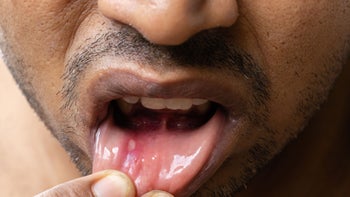
What Is a Dental Savings Plan?
Key takeaways:
Dental discount plans, also called dental savings plans, are membership programs that can make potentially expensive oral care more affordable.
Consider a discount plan if you are uninsured, are insured but have maxed out your annual benefit, or visit the dentist infrequently.
Before signing up for a dental savings plan, you should review the plan's network of providers, fees, and prescription or wellness benefits.

Maybe you’re months past due for your semiannual cleaning and checkup. Or maybe you’ve had a nagging toothache for weeks but haven’t made a dental appointment. If you’re putting off going to the dentist because you don’t have dental insurance and are concerned about costs, then buying a dental savings plan can help.
What is a dental discount plan?
A dental discount plan, also known as a dental savings plan, is a membership program for dental care. Members typically pay an annual fee to gain access to a network of participating dentists that provide dental services and treatments for a pre-negotiated, discounted cost. This is not to be confused with dental insurance. A discount plan is simply a way to get affordable dental care.
The amount you save on care varies based on a variety of factors, including:
Dental practice
Dental savings plan provider
Where you live
Type of service or treatment
Search and compare options
How do dental discount plans work?
A dental savings plan doesn’t work like dental insurance; there are no copays, monthly premiums, or claims to file. Instead, discount plans are an alternative to insurance and typically cannot be used in combination with dental coverage.
A dental savings plan may be good option for people who:
Don’t have dental insurance
Have reached their plan’s annual maximum benefit payout
Are expecting to have few dental visits
Are not anticipating major dental services or procedures
To purchase a plan, you will have to fill out an application. And, depending on the discount plan, you may be required to pay a one-time enrollment fee. Then, you will receive a discount card to show at each dental appointment to receive an instant discount — lowering your out-of-pocket costs. You will typically renew every year to keep these benefits.
Since it’s a fee-based program, if you know ahead of time what procedures you will receive, you can call the participating provider for an estimate. The number of participating providers depends on the discount plan. But going to an in-network provider will help you avoid getting stuck with an expensive, full-price bill.
There are several places you can look for a dental discount plan. Consider checking with:
Traditional health insurers: Examples of options through traditional health insurers include the Aetna and Cigna dental savings plans.
Dental insurance companies: Major dental insurance companies like Delta Dental and Renaissance Dental offer dental savings plans.
Private dentists: Sometimes, providers set up dental savings plans as in-house subscription plans to help you manage dental costs without insurance.
What should I look for when comparing dental savings plans?
With so many choices, it can be hard to pick a dental savings plan. But there are key features to consider when assessing what plan is best for you:
An extensive dental provider network: Check that your chosen dentist participates in the plan and that there are numerous other options for dental providers in your area. Some plans have limited coverage areas, while others are national.
Add-on benefits: Some plans offer extra perks at no costs. That could mean extra savings on prescription medications and wellness programs.
No upfront costs or enrollment fees: Ideally, plans won’t charge you to enroll. But if there is an enrollment fee, it should be minimal.
Multiple plan choices: Some plan providers offer tiered options with extra benefits, more specialists, and greater savings at a higher price.
Checking for these features can help you identify the best dental discount plan for your needs.
What procedures does a dental savings plan cover?
The types of procedures a discount dental plan may cover include:
Preventive: like teeth cleanings and routine exams
Basic: fillings, for example
Orthodontia: like braces
How does a dental savings plan differ from dental insurance?
There are numerous differences between a dental savings plan and dental insurance, as outlined in the table below.
Benefits | Dental savings plan | Dental insurance |
Annual limits | No | Yes |
Membership fee | Yes | No |
Copay | No | Yes |
Coinsurance | No | Yes |
Cosmetic dental savings | Typically | No |
Deductible | No | Yes |
Discounted services | Yes | No |
Health restrictions | No | Yes |
Preventive care coverage | No | Yes |
It’s important to read your dental savings plan and dental insurance benefits to get a better idea of coverage, savings, and restrictions.
Is a dental savings plan right for me?
When considering whether or not to buy a dental savings plan, ask yourself:
How often do I expect to visit the dentist?
What dental procedures, if any, have I been delaying?
Am I focusing on maintaining my dental and gum health or on treating a certain problem or condition?
Do I need major dental work — like a root canal, dentures, or crowns — anytime soon?
Will the discounted rates be more affordable than dental insurance?
What are other ways I can reduce costs for dental care?
Cost is the top reason that people don’t visit the dentist more frequently. But delaying dental care not only impacts oral health but can also negatively affect a person’s overall health and wellness — and may lead to more costly dental issues down the road.
If you’re looking for other ways to save on dental care, consider these strategies:
Visit a dental school. Contact your local college or university to check if they offer dental clinics. Procedures are often provided at a reduced rate or on a sliding fee scale based on income, household size, and other factors.
Negotiate your bill. Call your dentist’s billing department and explain your financial situation. You may be able to work out a payment plan or negotiate a discount if you can afford to pay upfront. In cases of hardship, you may be able to request medical debt forgiveness.
Visit a community health center. Community-based health centers typically help people in underserved areas. Therefore, dental services are often provided on a sliding fee scale to make care more affordable.
Use your health savings account. Also known as an HSA, this account can help you pay for out of pocket dental expenses with tax-free dollars. You can use your HSA to pay for numerous, eligible dental expenses, from fillings to extractions and wisdom tooth removal.
Set up an emergency fund. Put away emergency savings for unexpected medical expenses, including dental costs. This is typically done with a bank or credit union savings account.
The bottom line
A dental savings plan, also called a dental discount plan, is an alternative to insurance that can help you pay for dental care. If you buy a discount dental plan, you will have access to reduced rates for dental services through a network of participating dentists and, sometimes, other specialty providers. The best dental savings plans offer extra member perks like prescription and wellness benefits, expanded provider networks, and choice of tiered options at different prices.
Why trust our experts?


References
American Dental Association. (n.d.). ADA position on explanation of benefits (EOB) statements.
American Dental Association. (n.d.). Is an in-office dental plan right for your practice?
American Dental Association. (n.d.). Oral health and well-being in the United States.
American Dental Association. (n.d.). Plans that help you pay for dental care.
Careington1.com. (n.d.). Careington1 dental discount plans.
Galewitz, P. (2021). Dentists chip away at uninsured problem by offering patients membership plans. Kaiser Health Network.
Napitu, A., et al. (2023). Best dental savings plan 2023: Review of top dental discount plans. Dentaly.org.
National Association of Community Health Centers. (n.d.). What is a community health center?
National Association of Dental Plans. (2019). No dental insurance? Discount plans can provide saving.
University of Illinois Chicago College of Dentistry. (2019). The many costs (financial and well-being) of poor oral health.
























